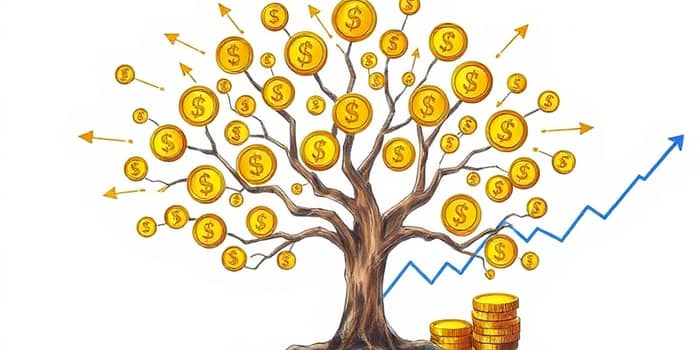
Dividends offer investors more than just a regular income stream—they provide a unique opportunity to turbocharge your portfolio’s performance. By channeling payouts back into share purchases instead of taking cash, you can harness the true power of compounding and unlock levels of growth that might otherwise remain out of reach.
When a company pays a dividend, shareholders typically receive cash. However, you can choose to reinvest those payouts automatically or manually. This process transforms passive income into an active growth engine for your portfolio, where every dollar works to buy additional shares.
Many brokers and funds offer Dividend Reinvestment Plans (DRIPs) that allow commission-free fractional share purchases, making it simple to put every dividend payment to work immediately. Whether through a DRIP, mutual fund accumulation units, or manual reinvestment, the mechanism remains the same: your dividends buy more shares, which then earn further dividends.
Compounding occurs when investment returns generate additional returns. Reinvesting dividends accelerates this cycle, leading to exponential growth over long horizons.
For a more granular example, imagine investing $20,000 in a stock at $20 per share (1,000 shares), with the price rising 10% annually and dividends increasing by $0.05 each year. After three years of reinvestment, your share count climbs to 1,069.5 and your portfolio value jumps from $20,000 to $28,471, purely through compounding effects.
Reinvestment offers a host of advantages for long-term investors. It smooths out market fluctuations, enhances income generation, and fuels rapid wealth accumulation:
Setting up automatic reinvestment via DRIPs or opting for accumulation units in mutual funds makes the process seamless. Many platforms enable commission-free fractional share purchases, ensuring every dividend cent contributes to your next share acquisition.
To plan effectively, use a compounding returns calculator with scenario modeling. This tool helps project potential outcomes under various return and dividend growth assumptions. Keep in mind that reinvested dividends remain taxable in non-retirement accounts, so consult a tax advisor to optimize your strategy.
While powerful, dividend reinvestment is not without caveats. Blindly reinvesting in underperforming or over-concentrated positions can hinder your overall portfolio health. Regular reviews and rebalancing are essential to avoid unintended exposures.
Dividend reinvestment aligns naturally with a strategy focused on growth and stability. By diversifying across sectors—utilities, consumer staples, financials—you build a diversified, risk-managed portfolio across sectors that balances income with capital appreciation.
Incorporate regular check-ins to assess yield levels, payout ratios, and company fundamentals. Use your reinvested dividends as a catalyst to strengthen core holdings or strategically add new positions that enhance long-term return potential.
Reinvesting dividends is more than a technical tweak—it’s a mindset shift toward relentless compounding. By turning each payout into fresh buying power, you tap into a self-reinforcing growth cycle that can transform modest investments into substantial wealth over time.
Begin today: enroll in your broker’s DRIP, set up mutual fund accumulation units, or manually reinvest each quarter. Watch as your portfolio takes on a life of its own, compounding with each dividend—and bringing you closer to your financial dreams.
References













